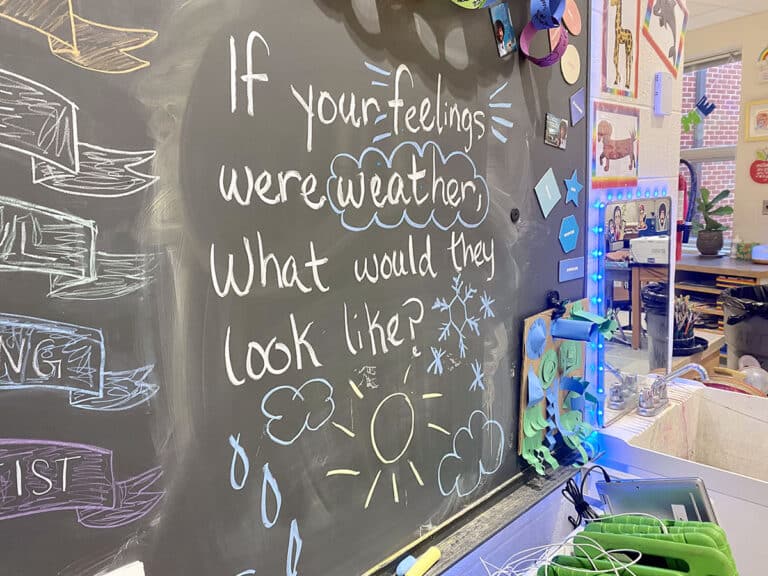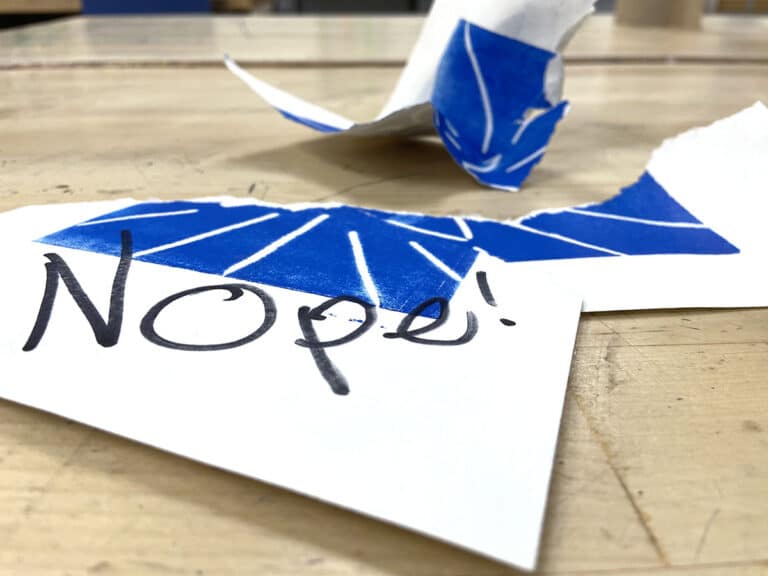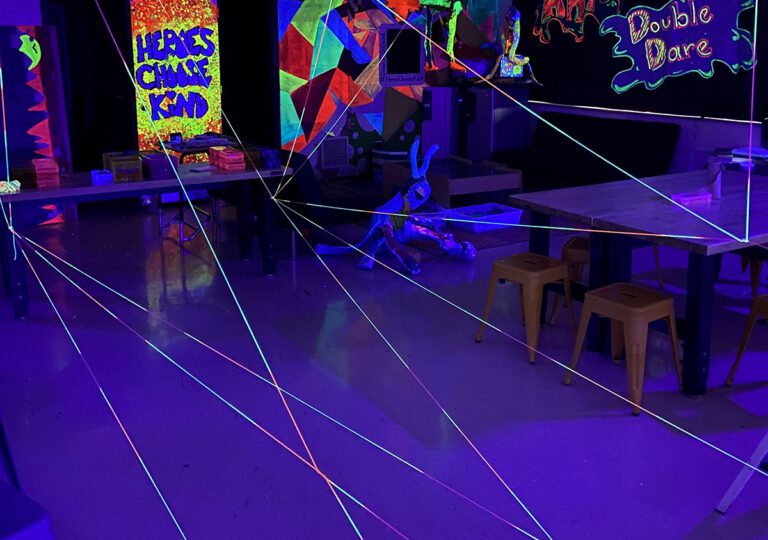One of the biggest frustrations for an art teacher is when a student suggests they are done with a project way too early in the process. You start negotiating as you try to convince the student to keep working because you see potential in the piece, and you planned for them to work for a few more days. It can be maddening.

Students learning to persist through their work is a valuable skill developed in the art room. But the ability to push through requires training, just like running. If you were told to run ten miles, how many would it take you (assuming, of course, you don’t typically run ten miles) before you start to walk and say, “I’m done!“? If you persisted in the ten-mile mark, it would likely be a negative result of soreness and injury. The proper way to accomplish this feat would be to gradually increase your distance over time. When the big day arrives, your body and mind would be trained to run the distance. Each student in the art room has a different level of artistic endurance that needs to be developed in order to work on projects for an extended period of time.
Understanding how to build students’ artistic endurance while maintaining a positive and successful experience can be challenging.
Here are 5 different approaches to help your students grow:
1. Build Within Your Lesson Planning
Start the class with shorter activities and projects. Build from one-day projects to multiple days and then to multiple weeks. When you step back from your lesson planning, you should see a gradual increase in the amount of time spent on each project. Just like you scaffold rigor, you need to scaffold structure.
2. Communicate with Students
Share with students the soft skills of persistence and commitment that are developed and honed in an art room. Set and communicate measured goals to students and make them aware of their progress. Be clear about your expectations with specific timelines. For example, sharing you want them to work for ten straight days on a project can help them mentally prepare for the next two weeks. They might have a better understanding of what that means because they just came off an eight-day project. Students can approach it with ease and pace themselves to get to the finish line.
3. Teach Persistence
When students lose motivation or disengage from their work, it’s easy to assume they are lazy or quitting. In many cases, however, students are fatigued and don’t have the skills or tools to push through after the initial excitement wears off. Teaching students strategies to pull from when they hit a low point can make them more independent learners and artists.

A few strategies include:
- Doing an informal critique with the teacher or a classmate
- Reviewing reference images for additional ideas or direction
- Taking a short break from the piece to clear the mind and come back with a fresh perspective
- Using materials like tracing paper, photocopies, etc. to experiment with ideas to further the piece without committing to something permanent
The goal is to teach students to refer to these strategies on their own without teacher direction.
4. Promote Artistic Reflection
When a student is deeply involved in a project, they don’t always have the self-awareness to check their own emotional levels. If frustration with the art piece is brewing, students risk doing more harm than good, and they need you to help them pull themselves out. Creating opportunities for students to pause, take a breath, and gauge their emotional levels can help students see if they need to take a necessary break or if it’s time to refer to one of the strategies above.
5. Build-in Breaks
Anyone who has trained for a marathon knows the importance of building breaks into the training plan. An opportunity to rest, focus on something different, and simply take a day away from the normal routine can help bring students back to their artwork with a fresh perspective. If you’re having students work on the same project for an extended time, scatter a couple of one-day activities throughout the schedule. Have students learn a new skill, work with a new medium, or simply do a brainstorming activity where they get to flex their creative muscles.

Creating artwork over an extended period of time is a skill that takes time to develop. As you build your lessons, plan intentionally to develop artistic fitness in your students throughout your course. Just like a long run, students are going to experience trials and tribulations that we have to help them overcome. Building their endurance and teaching strategies to persist through challenging moments is critical to their long-term success and of the best skills developed in the art room.
What other ways can we teach students to work for longer periods of time?
How can art teachers differentiate for a class of students at varying levels of artistic endurance?
Magazine articles and podcasts are opinions of professional education contributors and do not necessarily represent the position of the Art of Education University (AOEU) or its academic offerings. Contributors use terms in the way they are most often talked about in the scope of their educational experiences.





